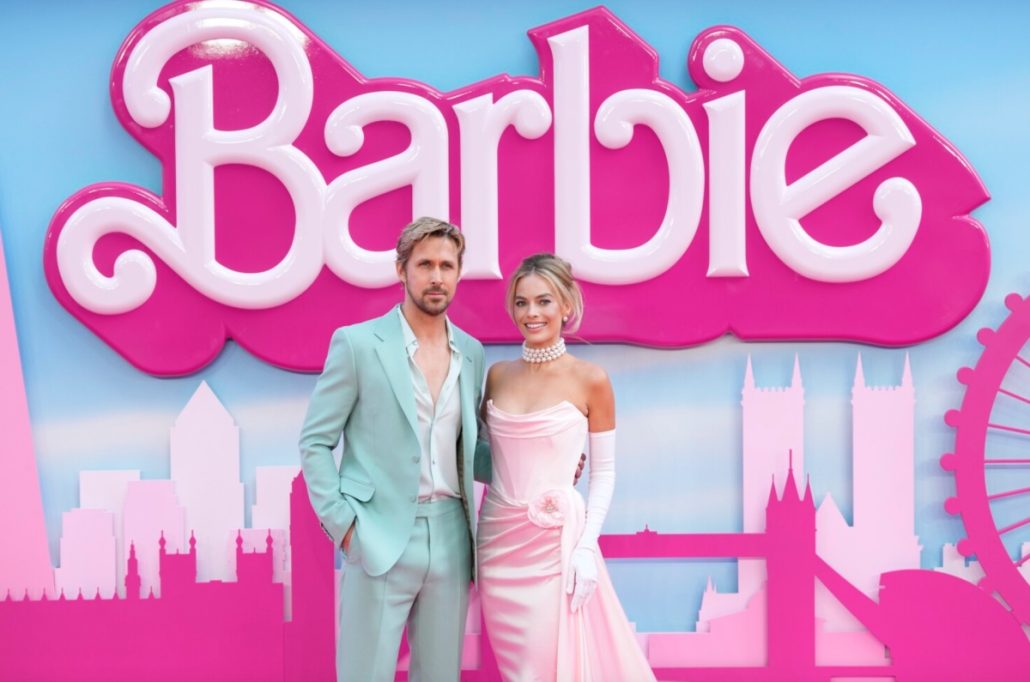Op Ed Mattel Commercial, The Barbie Movie
By Mahvish Akhtar
The Barbie movie has changed the way we look at movies, advertisements, and promotions of a product and the ideology attached. The brilliance of this film is unparalleled to any infomercial I have ever seen in the past. No business, no matter how big or small, has ever been able to make its consumers eager to pay them to watch a two-hour commercial. This is not an insult in the slightest, it’s a compliment.
I appreciate the film’s director, Greta Gerwig, for layering the story beautifully and turning the critics into fans without them realizing what had happened. Mattel and the whole team played an exceptional prank on the world. The feminists of the world had canceled Barbie because it was sexist and had set impossible standards for young girls and women. Sure, there were Doctor Barbie and Lawyer Barbie, Fireperson Barbie, and so on. The slogans said Barbies could be anything, but they all still looked, more or less, like Margot Robbie even before Margot Robbie.
With feminism in fashion and Barbie out of style, sales were seriously affected. No number of campaigns about “girls can be anything they want” or “pregnant Barbies” could save Mattel from losing business. Millennials have very different shopping trends than Generation X and the Generations before them did things differently. Mattel and other production heads did their research to capture and use all those marketing tools in the best way possible before launching this project.
They made a movie about the exact issue over which the world was trying to cancel them. Mattel tackled the subject of Barbie being a bad role model head-on without defending themselves. In fact, they threw themselves at the mercy of the audience. They admitted everything that they were accused of. Owning their flaws, accepting responsibility for mistakes made, and adding humor to show vulnerability turned out to be just the right move.
The world is problematic. The reasons we all do things and create art may differ from the reason it is used. Just that admission alone bumped them into the correct side of history without having to admit anything “publicly,” which these days means an apology on the internet. That would usually be followed up with having to make changes to Barbie or Ken. Mattel, however, did not have to do any of that.
Now that exact stereotypical white, blonde, size zero Barbie and her white, 8-pack surfer boyfriend are loved and accepted by all. Yes, even those who had heavily opposed their existence in the past. Now Barbie is a trailblazer, she’s a feminist. Barbie looks the same, and Mattel is now selling Margot Robbie and Ryan Gosling.
You can be anything; you can achieve anything. It would help, though, if you looked like those two. Don’t forget that Ryan Gosling is also a feminist because he is not ashamed to wear pink in public. He owns it. I have no ill feelings toward Gossling. This is a commentary on the film’s impact on society.
It’s brilliant marketing. I know the movie is way more nuanced than that, but we must admit we got bazinga’s by the creators and directors of the movie. We fell for the same old tricks. The Cognizance of feminism is turning over in its grave and gasping for its last breath. We stabbed it almost to death and buried it alive to suffocate and die alone.
I think those are the realities this movie tried to explore as well through its light and funny façade. Weird Barbie is the most fun and understated character. She is the only one in Barbie World who understands complex and nuanced realities. She is the audience; she is all of us. We all have been played with a bit too hard and broken, wondering where we belong. Sometimes outcasts and alone by choice, sometimes by other people. Occasionally, we are just lonely.
I felt terrible for Kens, or Ken rather. Stereotypical Barbie could not evoke much emotion in me other than nostalgia. However, Margot Robbie understood the assignment well. Of course, she was part of the production of the assignment, which might have helped.
Barbie’s world was perfect. Kens’ world was not so much. They were all told to stay in their place. Only they didn’t know where their place was. Barbies thought that by taking charge and becoming these perfect images of women, they had fixed the problems in the real world.
That directly reflects back to the idea that “you can be anything you want” but not everyone can look like a Barbie. Not everyone can get multiple hot guys to fight over them. They thought they had shown the world the right way of living just by existing. The world is way more complicated. When you apply it to the real world it fails. This brings up another issue with the film. In a perfect world, men would have to be oppressed. There is no other solution but for one party to overpower the other. Babie eventually left her world and came to ours finding no balance for her own. She accepted our world with its flaws as if to accept the oppression of women and the patriarchy because either way we hurt each other. The undertones of this movie are dangerous and quite damaging.
But it’s just a doll movie. Why is everyone so obsessed with it? Why do we need to have opinions? The director said in an interview that “Barbie is a complex icon.” Let’s look at how Barbie has been represented over the years. One of the first Barbie commercials was about Barbie getting married. The narrator sings, “Someday I’ll be exactly like you. Until then, I’ll just pretend”. In the 1960s and 1970s, Barbie had a new look. Commercials mentioned working Barbie. Barbie had hair you could brush and came with other accessories, including Ken. Of course, one of the ads said, “She’s the very same size,” which was important information that needed to be passed on to the consumer.
As times changed, there were actual safety concerns. The complaints were not just from activists and feminists. There were real safety concerns. In the 1980’s, a tech Barbie was introduced with an installed camera. These Barbies were shortly recalled for concerns of child predators and child porn. Mattel tried again with a Barbie that young girls could talk to about their problems, and Barbie would pull out answers from a database.
These are just a few examples where Mattel was reckless and didn’t do their research before putting the product on the market. All these ideas, including many more, have been highly unsafe and dangerous for children and young girls. If Barbie has been an icon, I don’t see it as an icon worth bringing back as a role model.
There was no Barbie before the ’50s. There were Dolls, though. Specifically Baby Dolls. The dolls that Barbie crushes in the movie when she first lands on the scene. This is a lesson for young girls that as long as they are playing with her and are letting her set the standards of what is beautiful, even if it’s wrinkles and gray hair (You remember the scene when Barbie sits on a bench and sees an old, wrinkled woman, turns towards her and tells her she’s beautiful). It’s not just a Doll Movie. She crushed the dolls. It’s a Barbie movie.
It is, nevertheless, a movie about toys. After this huge success, Mattel plans to make more movies based on other lines of toys. One cannot deny the fact that the film is a deconstruction of societal standing and priorities. The ideals we deem essential in our day-to-day lives. Another fact that the Barbie phenomenon has made apparent is that we ignore history-making events and glorify toys made from literal plastic to the point of global attention. That says something about us as a species. Maybe that’s something worth studying.





















2023
2,463 views
views
0
comments